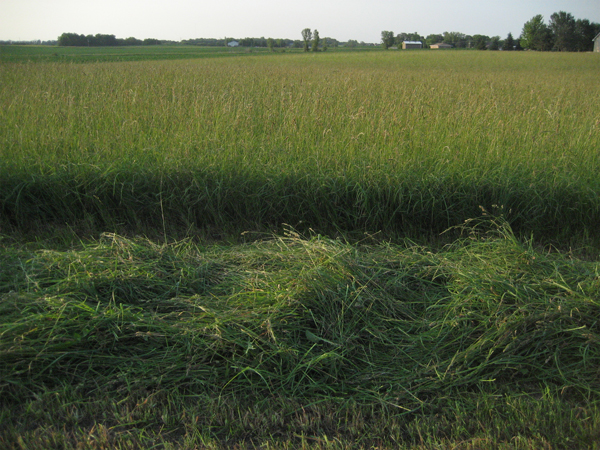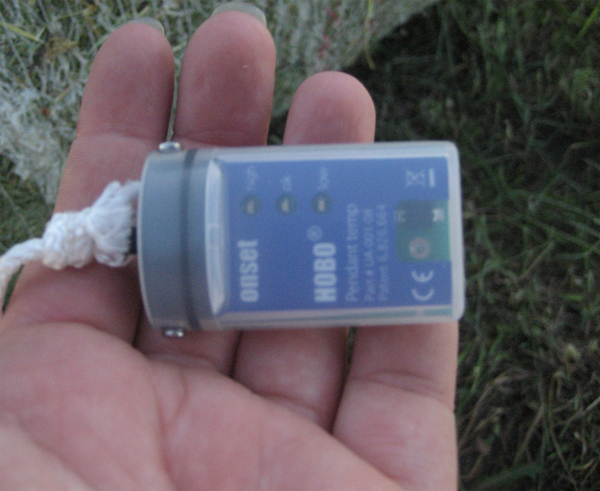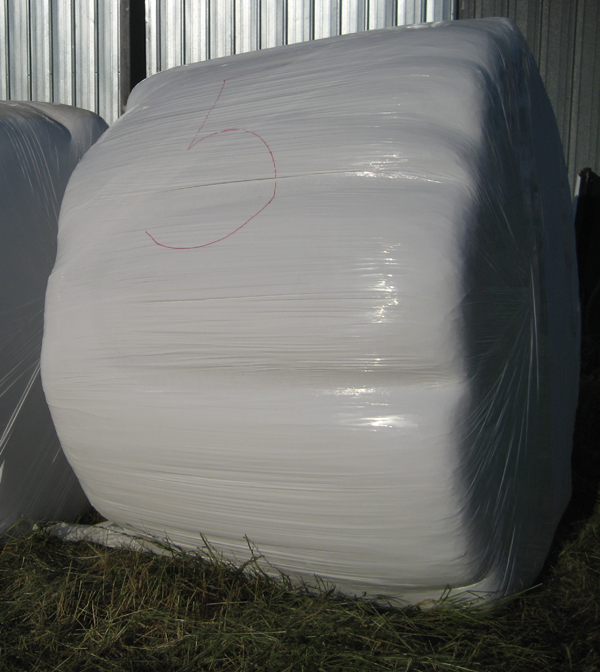Quick facts
- Baling dry (12 percent) orchardgrass hay or wrapping orchardgrass hay can maintain forage quality and reduce mold growth.
- Use 15 percent as a moisture threshold for safe storage of orchardgrass hay.
- Orchardgrass bales are prone to significant mold and poor forage quality at moistures slightly over 15 percent.
- Wrapping higher-moisture orchardgrass round bales can maintain forage quality.
- Be aware the stability of higher moisture bales after unwrapping and during feeding, especially during the summer months or with periodic feeding schedules is unknown.
Hay moisture while baling
Harvesting hay can be hard due to poor drying conditions and possible rainfall. Farmers may bale hay before it’s dry to avoid rain or other poor weather conditions. Wet hay results in mold and lower forage quality. Hay baled at less than 15 percent moisture is usually stable with little heating.
Testing moisture levels and bale
wrapping
In 2008 and 2009 the University of Minnesota evaluated the effects of moisture and bale wrapping on forage quality and mold of orchardgrass round bales. First cutting round bales were harvested at different moisture levels: less than 15 percent, 18 to 25 percent and 30 to 35 percent.
Following baling, each bale was cored six times, and samples were analyzed for forage quality. Temperature sensors were placed in each bale and the assigned bales were wrapped. In 2008 only the bales at 30 to 35 percent moisture were wrapped. In 2009 all the bales were wrapped. When the temperature sensors were removed, six additional cores were taken to determine forage quality and mold counts.
Moisture and bale wrapping affects mold and forage quality
Orchardgrass hay baled at higher moistures had reduced forage quality.
Moisture and bale temperature
The highest bale temperatures (145 and 180 F) for 21 and 33 percent moisture at baling was greater compared to 12 percent moisture (115 F). All other moisture levels had similar maximum temperatures to 12 percent moisture. Fire can occur when bale temperatures reach 150 F and is likely at 190 F. No fires occurred during this study, but unwrapped bales baled at higher moisture had heat damage.
Moisture and mold counts
Orchardgrass packaged in large round bales is prone to molding and forage quality loss at relatively low moisture. Orchardgrass hay baled at 12 percent moisture had low mold counts compared to unwrapped bales harvested at 17 to 33 percent moisture.
Although both 12 and 17 percent moisture bales had similar high temperatures, the difference in mold counts can be partly explained by how long the bales were warm. The unwrapped bales stayed warmer longer, which resulted in mold growth.
Mold species
Asperigillus and fusarium species are commonly found in wet hay and can produce mold toxins. Mold toxins can cause problems in horses. Learn more about why you should not feed your horse moldy hay.
- Aspergillus mold species were in all bales except 12 percent moisture.
- Cladosporium was in all unwrapped treatments.
- Fusarium was in the 17 and 12 percent moisture bales and the 18 and 26 percent moisture wrapped bales.
Feed safety for horses
All wrapped forage and 12 percent moisture bales were considered desirable horse forage. Seventeen to 33 percent moisture unwrapped bales were not. Because horses are sensitive to mold, their feed should contain little mold (less than 1 million colony forming units per gram).
Reviewed in 2021




